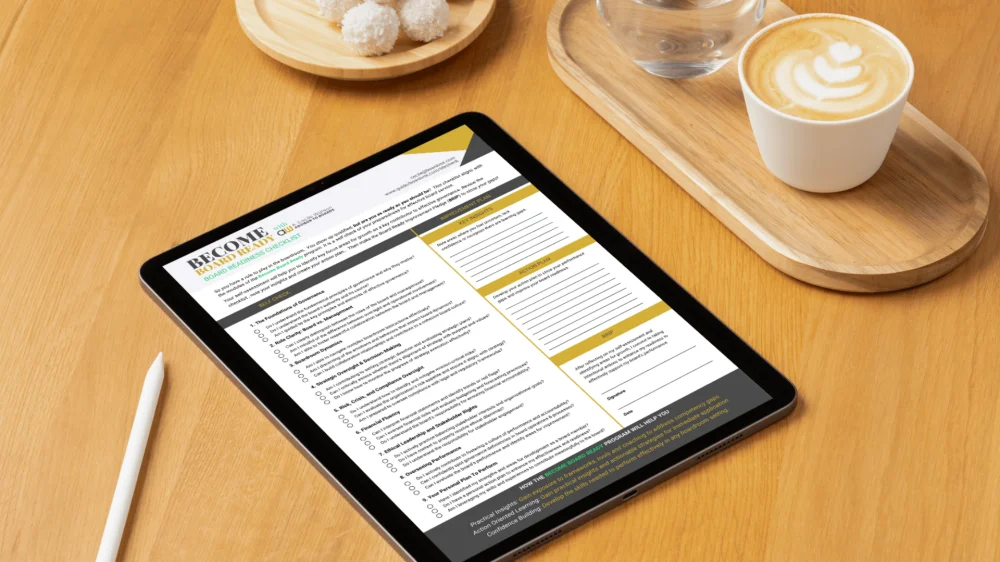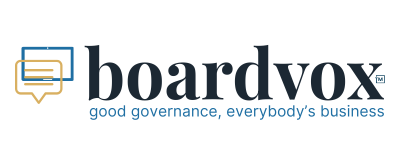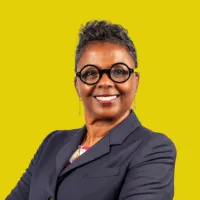Empowering
Good Governance Through You
... one board at a time
Download the Checklist and take the first step toward joining the Become Board Ready Program.
Download the Checklist and take the first step toward joining the Become Board Ready Program.
How we help
We are the
Voice, Tone and Expression of Good Governance
helping organizations to realize their full potential
by educating, informing, and supporting boards,
directors, and c-suite leaders
with the training, tools and services
to create the best value for today and the future.
How we help
We are the Voice, Tone and Expression of Good Governance
helping organizations to realize their full potential
by educating, informing, and supporting boards, directors, and c-suite leaders
with the training, tools and services to create the best value for today and the future.

Board & Director
Training
We support directors and c-suite leaders to be their best in the boardroom with coaching, workshops & online training.

Board Performance
Tools
We administer board evaluations, board improvement plans and provide technology to support improving board performance.

Board Operating
Support Services
We support boards to become more effective by offering services such as retreat facilitation, policy templates and admin tools.
Let's reimagine the future of board development.
We believe that every director holds the key to unlocking extraordinary boardroom potential. We also believe that the power to unlock sustainable economic growth resides with people just like you right there in the boardroom. Reputational risks are at an all time high. And board service is important work deserving of the best hearts and minds.
That's why we're making governance easier for smarter boards by helping directors embrace their profound responsibility and forge a path of independent thinking, ethical leadership and championing good governance.
Coming Soon!
Join The Waitlist for Become Board Ready
This checklist is your entry point to the
Become Board Ready Program ...a guide designed to empower directors and aspiring board members to excel in their governance roles.
Download the checklist and get waitlisted for Cohort II of Become Board Ready
Elevate Your Governance Expertise: Master the key principles that drive effective board leadership.
Strengthen Board Dynamics: Foster alignment, trust, and a shared understanding in the boardroom.
Confidently Navigate Your Role: Clarify your responsibilities and deliver value with confidence.
Enhance Strategic Oversight: Stay focused on purpose, accountability, and long-term success.

This checklist is aligned with the proven modules of our Become Board Ready program, so you can start assessing and addressing your readiness immediately.
Complete the form and you'll receive the Board Readiness Checklist directly in your mailbox.
Privacy Disclaimer:
We respect your privacy. The information you provide will only be used to deliver your checklist and occasional updates about governance insights and resources. We will never spam you, sell, or share your information with third parties.
RED FLAGS IN THE BOARDROOM CHECKLIST
Add it to your Board Engagement Toolkit to have a handy guide empowering you to:
Identify potential governance risks early
Be vigilant and avoid corporate governance failures.
Uphold the highest standards of transparency and ethics.



Boardroom Power Moves: What Boards Can Learn From Wells Fargo’s Leadership Changes
Wells Fargo once again sits in the governance spotlight. In July 2025, the bank’s board merged the roles of CEO and Chair, naming Charlie Scharf as Executive Chair. The decision reverses the independent chair policy the board introduced after the 2016 fake-accounts scandal and now reignites discussion on how boards balance the unity of purpose needed between management and the board with the independence that sustains oversight.
The decision, paired with a $30 million equity award for Scharf, draws a swift response from investors and governance advocates who question whether consolidating power at the top risks weakening oversight just as the company emerges from years of crisis.
While the debate centers on Wells Fargo, the question it raises is universal: how should boards manage the concentration of power at the top, especially when confidence in management’s performance is high but stakeholder trust is still being rebuilt?
A. Background: How the Debate Emerged
In July 2025, Wells Fargo’s board approved the merger of its CEO and Chairman roles, testing the balance between operational unity and independent oversight.
Key points that shaped this discussion include:
The role merger was not subject to a shareholder vote at the April 2025 annual meeting. It was enacted and announced by the board in July.
The decision recognized Scharf’s leadership in stabilizing the bank after years of regulatory constraint and crisis recovery.
It ended the independent Chair policy introduced after the 2016 scandal, which had proved effective in rebuilding trust and reinforcing risk oversight.
To address governance concerns, the bank committed to appointing a Lead Independent Director (LID). Activist group The Accountability Board, however, maintains that an independent Chair remains a vital safeguard in volatile times.
By combining the roles, Wells Fargo joins a small group of U.S. banks returning to a CEO-Chair model, even as many global peers continue to separate the positions as a mark of governance maturity.
B. The Pull of Leadership Structure
Accountability is not a constraint on power. It is what gives power its legitimacy.
Wells Fargo’s leadership change offers a useful lens for every board navigating its own balance of authority. The decision leads us to understand how leadership structure is influential in shaping where power sits and how effectively it is held to account.
Boards everywhere face the same pull between unity and independence, confidence and caution, efficiency and accountability. Understanding this pull is what separates governance that simply functions from governance that builds trust.
We can explore this balance by looking at four factors that shape how boards manage power and accountability.

1. Boards should ensure that accountability endures irrespective of where leadership power sits.
Separating the Chair and CEO roles remains a guided practice of good governance. Global standards such as ISO 37000 and the OECD Principles support this separation for a simple reason: no one should supervise themselves. And this is especially so when it comes to managing other people’s money.
The Chair leads the board and ensures directors hold management accountable.
The CEO leads the business and remains accountable to the board.
When one person holds both roles, oversight can blur. The board’s ability to challenge executive decisions weakens, even when intentions are sound. Safeguards exist not to limit leadership but to protect integrity. When power concentrates, transparency and accountability must strengthen deliberately.
The lesson is clear: accountability must be designed to outlast any individual or leadership model.
2. Unified leadership can strengthen alignment but test independence.
Wells Fargo’s board views its decision as recognition of progress under Scharf’s leadership and as a signal that stability has returned. And we can certainly see how unified leadership can bring clarity, faster decision-making, and a consistent message.
Investors, however, see a different risk. They question whether independence can survive when the top roles merge. The issue, you see, is not whether Scharf earns confidence, but whether the board can maintain robust oversight as authority concentrates.
Boards observing this moment will note that: alignment and accountability must grow together. Confidence in leadership should never weaken the discipline of challenge. Every board that finds itself past crisis must ask whether it has kept the guardrails that secured its recovery, or quietly set them aside once things seem steady again.
The lesson is clear: stability should never soften a board’s vigilance or weaken the guardrails that protect its independence.
3. A Lead Independent Director only serves independence when the role has real authority.
The Wells Fargo board plans to appoint a Lead Independent Director to preserve oversight within its new structure. For other boards, this moment is a reminder that independence by title is not the same as independence in practice. The effectiveness of the LID depends on how clearly the role is defined, supported, and respected within the board’s governance framework.
A strong LID will:
Help shape the board’s agenda and protect space for independent discussion
Lead executive sessions without management present
Guide the CEO’s performance evaluation
Serve as the bridge between directors and the CEO-Chair
Intervene when independence or transparency appears at risk
But even this structure can fail if it lacks real authority.
Boards that adopt a Lead Independent Director model must back it with clear delegation of responsibilities, adjustments to bylaws or board charters, and a culture that values constructive challenge. A title without influence becomes symbolic. Independence only matters when it shapes how decisions are made, not just who makes them.
The lesson is clear: structure alone cannot guarantee independence; authority must be written, practiced, and culturally reinforced.
4. Trust grows when boards protect space for challenge.
Governance maturity is not measured by how quickly boards decide but by how confidently they challenge. As leadership roles converge, boards must make oversight more intentional and less assumed.
Unified leadership can strengthen coordination, but it often narrows the space for constructive dissent. Boards that want to sustain trust must therefore protect that space deliberately.
They do this by defining clear boundaries between governance and management, maintaining transparency in information flow, and ensuring that every director feels and acts responsible for independent thought.
The lesson is clear: independence and alignment can coexist ...but only so when directors see challenge as a duty, not an act of defiance.
C. Closing Reflection
If you have a seat at the table, as a director or a C-suite leader, and you’re serious about strengthening trust and credibility, I invite you to hold a mirror up to your board. The questions are simple, but the answers reveal the depth of governance maturity:
How transparent are your decision-making processes?
Do you actively invite challenge, or only tolerate it?
Are your independent directors equipped to influence, not just observe?
If your leadership power is concentrated, are your systems still holding it accountable?
Are you relying on structure to create trust, or on behavior to sustain it?
These are not questions for Wells Fargo alone. They are universal tests of stewardship.
The Wells Fargo story may seem to be about one bank’s choice. But it is also a reminder for every board to be ready to explain its own. Because good governance requires the steady work of proving that authority can withstand scrutiny.
Within this story, we see that stakeholders will always look for evidence that accountability is real. Our readiness to be questioned, to explain, and to stand by decisions made in the open is therefore where we must remain anchored. Because in the end, accountability is not a constraint on power. It is what gives power its legitimacy.
I said: I wanted to give you an outcome that was comprehensive, informed by the standards, and could be used as a framework to guide this and future preparations.
She responded: That's the approach I would expect from you and I advocated for the engagement on that basis.
Bold Leadership. Ethical Governance. Meaningful Impact. That's the charge. Carry it Forward!
Enjoyed this article? Subscribe to never miss an issue.
Drop me a note and share your best board leadership stories.
Stay tuned for more perspectives on bold leadership, ethical governance and meaningful impact insights. And if you haven't already, be sure to subscribe so you never miss a post. Together, we're set to build better boards and build boards better by reshaping the landscape of boardroom leadership, one director at a time.
🌐💼 #BecomeBoardReady #strategy #BoardDevelopment #CorporateGovernance #GoodGovernance #BoldLeadership #EthicalGovernance #BoardPerformance #boardvox 🤝🔍
Know someone who might be interested in this blog? Please be sure to share it with them.
Also be sure to follow our boardVOX WhatsApp channel here. It is Especially for directors, c-suite leaders, corporate secretaries and all interested in good governance.
YES, YES ...I GET IT
This is exactly what I need right now.
I'm seeking a network of professionals who understand the challenges of the boardroom.
I want to elevate my leadership and have a real impact in the boardroom.
Continuous learning is crucial in our field, and I'm eager to stay ahead.
I believe in the power of good governance to shape the future of business and communities.
If this sounds like you, then DIVE RIGHT IN!
Join Our Movement As
A Partner In Good Governance.
We're here to help you avoid the SHOULD'VEs and COULD'VEs in fulfilling your responsibilities as a director.

